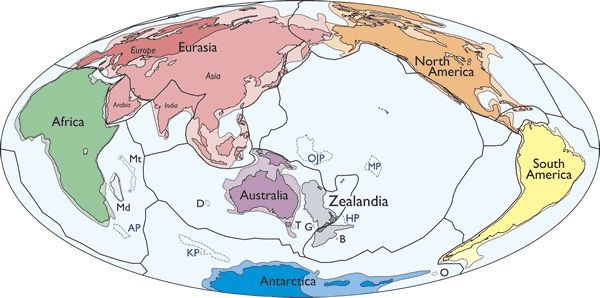What Is Zealandia? Possibly The Eighth Continent, Could Be Two-Thirds The Size Of Austrailia

A group of geologists have argued in the March/April 2017 issue of the journal GSA Today that the world has not seven, but eight continents. Zealandia, a mostly submerged landmass located near Australia and partly under New Zealand should be given official recognition as a continent, according to the scientists.
It is “a large enough area to be considered a continent rather than a micro-continent or continental fragment,” the article says. According to the study, Zealandia could have an area of around five million square kilometers (3.1 million square miles). Roughly 94 percent of the area is supposed to be underwater, with only a few islands located at the surface — New Zealand’s North and South islands and New Caledonia.
For it to be classified as a continent it has to meet five criteria, all of which have been fulfilled in this case:
- elevation above the surrounding area
- distinctive geology
- a well-defined area
- a crust thicker than the regular ocean floor
“The scientific value of classifying Zealandia as a continent is much more than just an extra name on a list, that a continent can be so submerged yet unfragmented makes it useful for exploring the cohesion and breakup of continental crust,” the article further says.
Zealandia, which is said to be two-thirds the size of Australia, is assumed to have broken away from the Gondwana landmass, which also comprised of Australia and defragmented 60-85 million years ago.
While it was previously called a micro continent, arguments for it being called a continent are becoming stronger. In 2007, Geologist Dr. Hamish Campbell had argued for the same.
Campbell claimed in his book, "In Search of Ancient New Zealand," published in September 2007, that the sudden awakening and collision of the continental plates about 23 million years ago twisted and deformed the flat Zealandian plains and forced them up and out of the Pacific Ocean.
But, as there is no global scientific authority which identifies and attributes continents, the only way Zealandia becomes a continent would be if future researchers accept the same.
© Copyright IBTimes 2024. All rights reserved.











